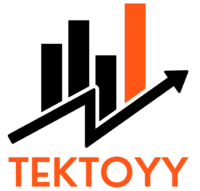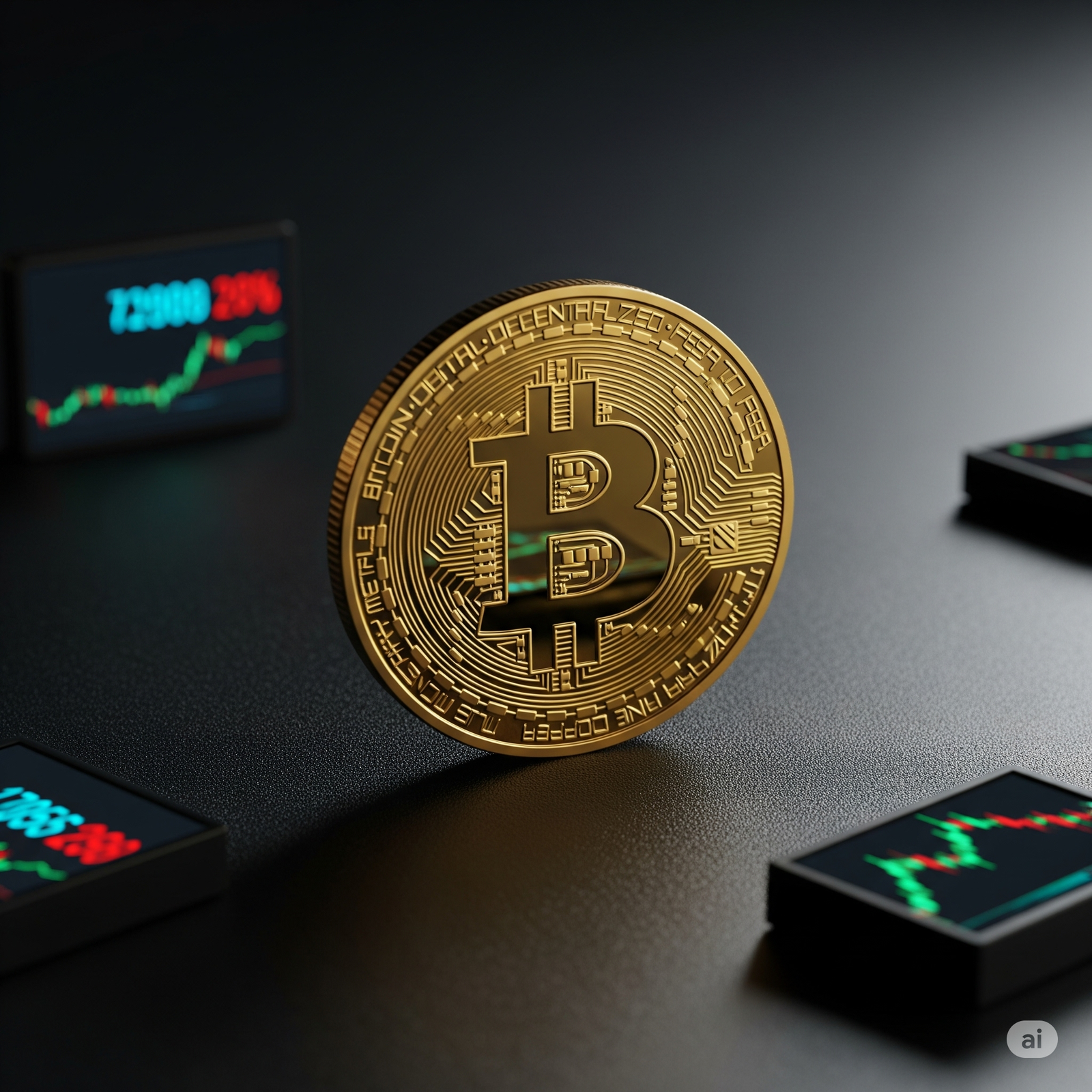The world of finance is constantly evolving, and no innovation has been more disruptive in the last decade than cryptocurrency. From Bitcoin’s meteoric rise to the burgeoning ecosystem of decentralized finance (DeFi), digital assets have captured the attention of mainstream investors, tech enthusiasts, and financial institutions alike. But for a newcomer, the crypto space can feel like a complex and intimidating new frontier.
This guide is designed to cut through the noise. We’ll provide a clear, step-by-step roadmap for beginners to start investing in cryptocurrencies safely and intelligently. Whether you’re looking to dip your toes in with a small investment or build a significant position in this emerging asset class, this is the foundation you need.
What is Cryptocurrency? A Beginner’s Introduction

Before you invest your first dollar, it’s crucial to understand what you’re buying. At its core, a cryptocurrency is a digital or virtual token that uses cryptography for security. Unlike traditional currencies issued by governments (like the U.S. Dollar), most cryptocurrencies are decentralized.
This decentralization is made possible by a technology called blockchain. Think of a blockchain as a digital public ledger—a highly secure and transparent record book. Every transaction is grouped into a “block” and added to a “chain” of previous transactions. This chain is distributed across thousands of computers worldwide, making it virtually impossible to alter or counterfeit.
- Bitcoin (BTC): The original cryptocurrency, created in 2009. It’s often referred to as “digital gold” and is primarily seen as a store of value—an asset that can maintain its purchasing power over time.
- Ethereum (ETH): The second-largest cryptocurrency, Ethereum took the concept of blockchain a step further by enabling “smart contracts.” These are self-executing contracts with the terms of the agreement directly written into code, forming the backbone of thousands of applications in areas like DeFi and NFTs.
- Altcoins: This is a term for any cryptocurrency other than Bitcoin. There are thousands of altcoins, each with a different purpose, from powering new social media platforms to streamlining global supply chains.
Understanding these basics is the first step in becoming an informed investor, not just a speculator.
Is Investing in Cryptocurrency Right for You? Assessing the Risks
Cryptocurrency investing offers the potential for significant returns, but it comes with a unique set of substantial risks. It is essential to conduct an honest self-assessment before proceeding.
- Extreme Volatility: The most defining characteristic of the crypto market is its volatility. Prices can experience dramatic swings of 10%, 20%, or even more in a single day. You must have the stomach to handle these fluctuations without making panic-driven decisions. The golden rule is to never invest more than you are willing to lose.
- Regulatory Uncertainty: Governments around the world, including in the U.S., are still developing frameworks to regulate digital assets. Future laws concerning taxes, trading, and usage could significantly impact the market’s direction.
- Security and Custodial Risks: Unlike a bank account, which is insured by the FDIC, your crypto assets are your responsibility. If you lose access to your private keys (the password to your crypto) or fall victim to a scam, your funds can be lost forever with no recourse.
If you are comfortable with these risks and see the long-term potential of the technology, then you are ready to move on to the practical steps.
Step 1: Choosing the Right Cryptocurrency Exchange

A cryptocurrency exchange is an online marketplace where you can buy, sell, and trade cryptocurrencies. For beginners, a centralized exchange (CEX) is the best place to start. These platforms function as trusted intermediaries, similar to a traditional stock brokerage, making the process user-friendly.
Here’s what to look for when selecting an exchange:
- Security: This is non-negotiable. Look for exchanges that offer Two-Factor Authentication (2FA), hold a significant portion of assets in “cold storage” (offline), and have a proven track record of protecting user funds.
- Fees: Exchanges make money through fees. Understand the fee structure, which can include trading fees (a percentage of your buy/sell order), deposit fees, and withdrawal fees.
- User Experience (UX): As a beginner, you want a platform with a clean, intuitive interface that makes it easy to navigate and place orders.
- Coin Selection: Ensure the exchange lists the cryptocurrencies you are interested in buying. While some offer thousands of altcoins, a beginner is often best served by starting with major assets like Bitcoin and Ethereum.
- Liquidity: High liquidity means there are many buyers and sellers on the platform, allowing you to execute trades quickly at a fair market price. Major U.S.-based exchanges like Coinbase, Gemini, and Kraken are known for their high liquidity.
Step 2: Creating and Verifying Your Exchange Account
Once you’ve selected an exchange, the next step is to create and secure your account. The process is straightforward but requires careful attention to detail.
- Sign Up: You will need to provide basic information, including your name, email address, and a strong, unique password. Do not reuse a password from any other site.
- Enable Two-Factor Authentication (2FA): This is the single most important security step. 2FA adds a second layer of protection by requiring a time-sensitive code, usually from an app on your phone, in addition to your password. Use an authenticator app like Google Authenticator or Authy, as it is far more secure than SMS-based 2FA.
- Complete KYC Verification: To comply with U.S. regulations like the Bank Secrecy Act, exchanges must verify the identity of their customers. This process is known as “Know Your Customer” (KYC). You will be required to submit a photo of a government-issued ID (like a driver’s license or passport) and possibly a selfie or proof of address. This is a standard procedure designed to prevent fraud and money laundering.
Step 3: Funding Your Account with Fiat Currency
Now that your account is set up and verified, you need to deposit U.S. Dollars (also known as fiat currency) to start buying crypto. Most exchanges offer several funding options:
- ACH Bank Transfer: This is often the most popular method for beginners. It’s a direct transfer from your checking or savings account. While it typically has the lowest fees, the funds may take a few business days to settle before you can withdraw your purchased crypto.
- Wire Transfer: Wire transfers are generally faster than ACH, with funds often available the same day. However, they usually come with higher fees from both the exchange and your bank.
- Debit Card: Buying crypto with a debit card is typically instant, allowing you to purchase right away. The trade-off is significantly higher fees compared to bank transfers.
- PayPal: Some exchanges, like Coinbase, allow you to fund your account or buy crypto directly with PayPal, offering another layer of convenience.
Consider the trade-offs between speed and cost to decide which method is best for you.
Step 4: Placing Your First Cryptocurrency Order

With your account funded, you’re ready for the exciting part: buying your first crypto.
- Navigate to the Trading Section: Find the “Buy,” “Trade,” or “Market” section of the exchange.
- Select Your Cryptocurrency: Choose the asset you want to purchase, for example, Bitcoin (BTC). You’ll be taken to its trading page, where you’ll see a price chart and an order panel.
- Understand Order Types: You will primarily encounter two types of orders:
- Market Order: This is the simplest option. A market order executes your purchase immediately at the best available current price. You just specify how much USD you want to spend (e.g., “$100 of BTC”).
- Limit Order: A limit order gives you more control. You set a specific price at which you are willing to buy. The order will only execute if the market price reaches your limit price or lower. For example, if BTC is trading at $65,000, you could set a limit order to buy at $64,500.
- Confirm Your Purchase: Double-check the details—the amount, the fees, and the total cost. Once you confirm, the transaction will be executed.
Congratulations! You are now a cryptocurrency investor. The crypto you purchased will appear in your exchange account wallet.
Step 5: Securing Your Investment – Crypto Wallets Explained
While keeping a small amount of crypto on a reputable exchange is convenient for trading, it’s not the most secure long-term storage solution. You may have heard the phrase in crypto circles: “Not your keys, not your coins.” This means that if you don’t control the private keys to your crypto, you don’t truly own it.
To take full custody of your digital assets, you need a personal crypto wallet.
- Hot Wallets (Software Wallets): These are applications that run on your computer or smartphone (e.g., Exodus, MetaMask). They are “hot” because they are connected to the internet. They offer a good balance of security and convenience but are vulnerable to online threats like malware.
- Cold Wallets (Hardware Wallets): These are physical devices, similar to a USB drive, that store your private keys completely offline (e.g., Ledger, Trezor). This is the gold standard for security and is highly recommended for storing any significant amount of cryptocurrency. Transactions are signed on the device itself, so your keys are never exposed to the internet.
When you set up any personal wallet, you will be given a seed phrase or recovery phrase (usually 12 or 24 words). This phrase is the master key to all your crypto. Write it down and store it in a secure, offline location. Never store it digitally or as a photo on your phone. If you lose this phrase, you lose your crypto forever.
Developing Your Crypto Investment Strategy

Buying is just the beginning. A thoughtful strategy will help you navigate the market’s ups and downs and achieve your financial goals.
- Dollar-Cost Averaging (DCA): This is perhaps the best strategy for beginners. It involves investing a fixed amount of money at regular intervals (e.g., $50 every week), regardless of the price. DCA removes emotion from investing and reduces the risk of buying in at a market top.
- Diversification: Don’t put all your eggs in one basket. While starting with Bitcoin and Ethereum is wise, as you learn more, you might consider diversifying into other projects with different use cases. However, avoid over-diversifying into obscure coins without thorough research.
- Do Your Own Research (DYOR): This is a mantra in the crypto space. Before investing in any project, read its whitepaper, understand its purpose (the problem it solves), investigate the team behind it, and look at its community engagement.
- Define Your Time Horizon: Are you investing for the short term or the long term? Most successful crypto investors adopt a long-term perspective (a strategy known as “HODLing”), allowing them to ride out market volatility and bet on the growth of the underlying technology.
Understanding Taxes on Cryptocurrency Investments
In the United States, the IRS treats cryptocurrency as property for tax purposes, not currency. This has important implications.
- Taxable Events: A taxable event occurs when you “realize” a gain or loss. This includes:
- Selling crypto for U.S. Dollars.
- Trading one cryptocurrency for another (e.g., swapping Bitcoin for Ethereum).
- Using cryptocurrency to purchase goods or services.
- Capital Gains: If you sell or trade crypto for a profit after holding it for more than one year, it’s considered a long-term capital gain and is taxed at a lower rate. If you hold it for one year or less, it’s a short-term capital gain, taxed at your regular income tax rate.
- Record Keeping: It is essential to keep meticulous records of every transaction, including the date, the cost basis (what you paid), the sale price, and any associated fees. Using crypto tax software like Koinly or CoinTracker can automate this process and save you a massive headache come tax season.
Disclaimer: This information is for educational purposes only. Consult with a qualified tax professional for advice tailored to your specific situation.
Staying Safe and Avoiding Common Crypto Scams
The decentralized and irreversible nature of crypto transactions makes it a target for scammers. Staying vigilant is key.
- Phishing Scams: Beware of fake emails, texts, or social media messages that mimic legitimate exchanges or wallet providers, trying to trick you into revealing your login credentials or seed phrase.
- Giveaway Scams: You might see a social media post from a “celebrity” or “exchange” promising to double any crypto you send to their address. These are always scams.
- The Golden Rules:
- Never, ever share your private keys or seed phrase with anyone.
- If an investment opportunity or giveaway sounds too good to be true, it is.
- Always double-check wallet addresses before sending funds. A single typo can send your crypto to the wrong person, and you will not be able to get it back.
Your Journey into Digital Assets

Investing in cryptocurrency is a journey that requires curiosity, patience, and a commitment to continuous learning. By following the steps outlined in this guide—understanding the fundamentals, choosing a secure exchange, prioritizing the safety of your assets, developing a sound strategy, and being aware of the risks—you are building a strong foundation for success.
The world of digital assets is about more than just price charts; it’s about a fundamental shift in how we think about finance, ownership, and the internet itself. Welcome to the new economy.







